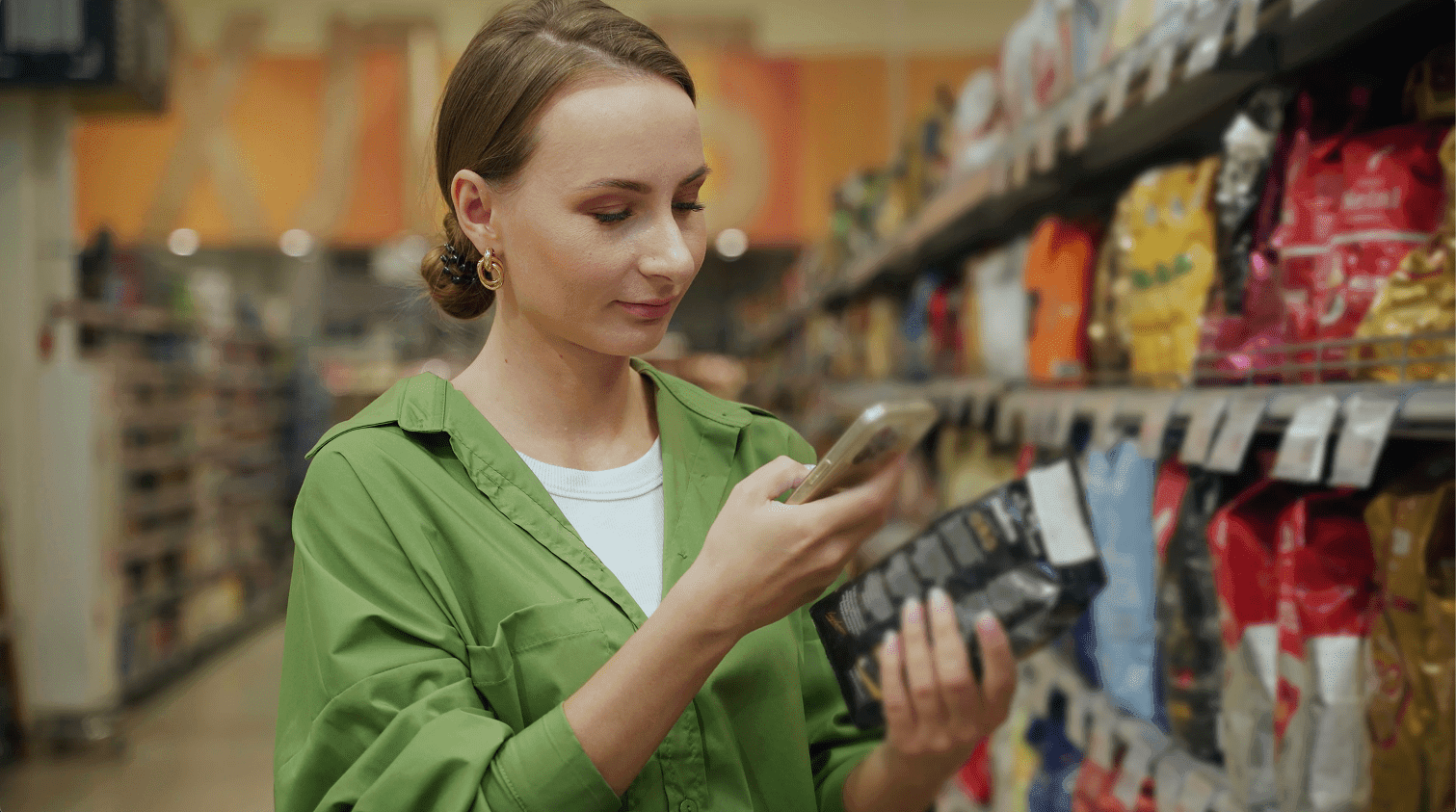




A Smarter Way to Support Health - Connected Packaging
The NHS is developing a new 10-year plan that looks to prevent heart disease, rather than just treat it. One of the key proposals is a mandatory push for food brands to put calorie and nutrient information front and centre on packaging to support healthier consumer choices.
This surfaces a familiar challenge for brands: space. Physical packaging real estate is often limited, especially on smaller products, leading to shorthand systems like traffic light labels for nutrition. These offer just a snapshot of what’s inside a product - useful, but basic and pose their own problems such as accessibility.
This is where connected packaging offers something more powerful.
The limits of front-of-pack labels
Most front-of-pack nutritional schemes focus on simplicity: red, amber, green colour codes, calorie counts per portion, or daily intake percentages. These can be effective for quick glances, but they don’t tell the full story. There’s no room to explain what “high in saturated fat” really means for long-term health and how it might vary for who is consuming it. No chance to show how one product compares to another. No context around how a food fits into a balanced lifestyle.
And when it comes to categories like snacks, sweets, or ready meals - products that consumers already know aren’t the healthiest, the information is likely to be ignored altogether.
That’s not because consumers don’t care. It’s because the delivery mechanism isn’t doing enough to connect with them in a way that’s contextual to their own situation.
Turning packaging into an active health channel
Connected packaging creates an entirely new platform - not on the pack, but through it.
By linking physical products to digital experiences (via QR codes or NFC tags), brands can deliver rich, educational and personalised content to consumers directly on their phones - right at the point of purchase or consumption. They can turn the static medium of packaging, into a dynamic form of content.
In the context of the NHS's preventative health goals, this opens the door to a much more engaging, contextual, and scalable way to communicate critical health information. These could include:
Interactive calorie counters that show how a product fits into your daily intake - and adjusted based on age, gender or lifestyle.
Ingredient breakdowns that visualise where nutrients come from, and what they do in the body.
Portion guidance tools that demonstrate what a healthy serving looks like in real life, not just on paper.
Product comparisons that help shoppers swap one product for another with less salt or sugar, without sacrificing taste or enjoyment.
All of this is possible through the same piece of packaging. All of it powered by digital product data, and a dynamic ID platform (such as io.tt).
Helping people make smarter choices - without the finger wagging
There’s also a powerful behavioural opportunity here. Rather than shaming or scaring consumers away from foods they love, brands can shift to a role of active supporter - helping people enjoy their products in ways that are smarter and more sustainable for long-term health.
A confectionery brand could show how its chocolate bar fits within a balanced daily intake. A fast-food chain could offer a digital quiz that helps customers build a meal that matches their nutritional goals. Even energy drinks or crisps could flip the script by empowering consumers to learn, understand, and make informed choices.
And unlike static packaging that needs months of lead time to update, connected packaging can be iterated and evolved in real time - reacting to new research, seasonal trends, or consumer preferences.
A platform for long-term engagement
By turning a product into an always-on digital experience, brands can play an active role in promoting public health goals, including heart disease prevention. And they can do it in a way that’s fully aligned with their commercial objectives - boosting brand affinity, supporting repeat purchase, and collecting valuable insights on what matters to their consumers.
In addition to this, your consumers’ behaviour including where and when they’re scanning, how many times, and what they look at once they’ve scanned, is all data you can use. Are consumers looking at dietary requirements before or after they buy? Are they more interested in allergens or nutrition? All of this is valuable information that helps you build a better picture in your mind about who your consumers are – and it’s data that you own.
It’s time to think beyond the traffic light. Connected packaging has the power to reimagine what responsible marketing looks like - and to make packaging part of the solution to one of the UK’s biggest health challenges. Find out how io.tt can help you create dietary product information pages at scale, across your brand today.
